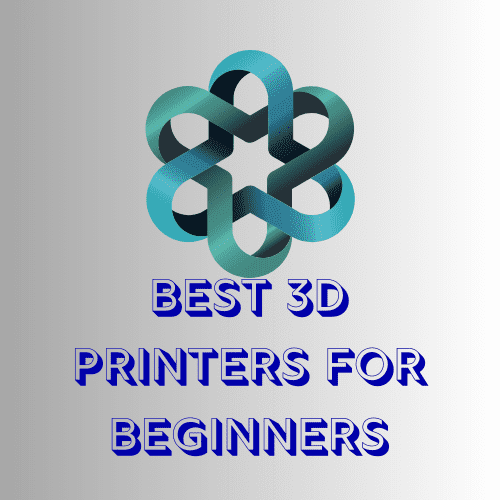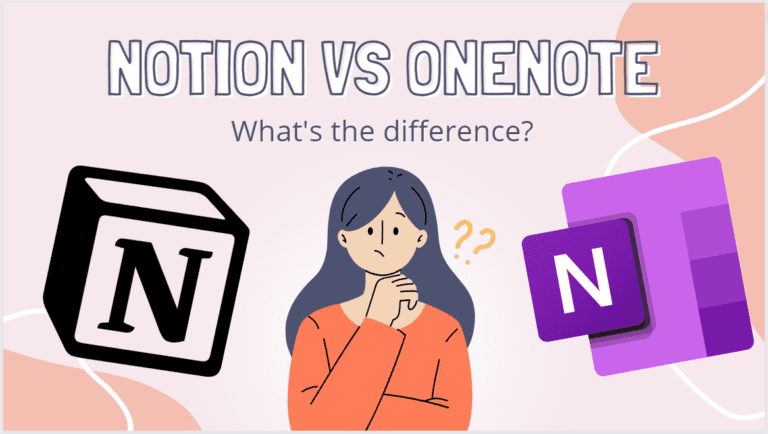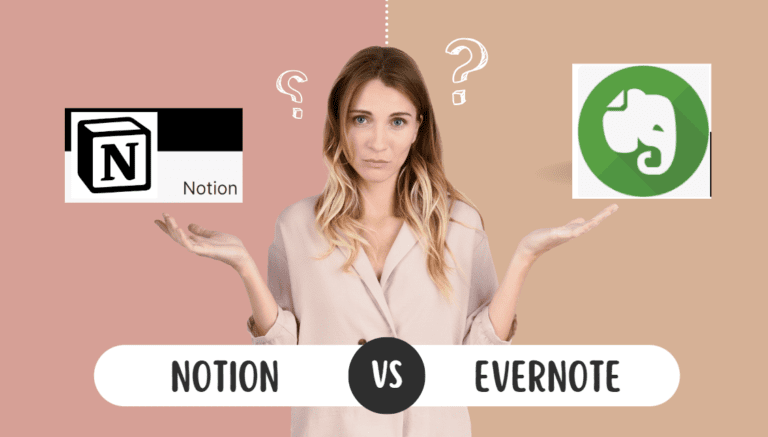5 Best 3D Printers For Beginners in 2024

Hi, and welcome to my review of the 5 best 3D printers for beginners.
With so many new 3D technologies around, it can be tricky to figure out which device fits your needs and skill level, especially if you are just starting out. This comprehensive guide will take all the guesswork away.
I’ll cover key factors like price, print quality, reliability, and ease of use.
After reading this blog post, you will be able to find the best device to bring the craziest 3D Files to life!
What are the best 3D printers for beginners?
I know you’re in a hurry, so here’s a quick look at the top printers for newbies.
| Printer Model | Price | Build Volume (mm) | Key Features | Pros | Cons |
| AnkerMake M5 | Prime: $319.00 OP $399.99 | 235 x 235 x 250 | Fast printing (250 mm/s), AI error detection, app connectivity, camera, PEI print bed | Fast speeds, auto bed leveling, beginner-friendly app | Noisy fans |
| Sovol SV06 Plus | Prime: $303.24 OP: $399.00 | 220 x 220 x 250 | Dual Z-axis,32-bit board, auto bed sovol sv0leveling, direct drive, PEI print surface | Open-source, excellent print quality, direct drive extruder | No filament runout detection |
| Creality Ender 3 V3 SE | $219.00 | 220 x 220 x 250 | Auto bed leveling, 32-bit silent board, power outage recovery | Affordable price, easy setup, large build volume | No touchscreen, no filament runout sensor |
| Elegoo Neptune 3 Pro | $249.99 | 225 x 225 x 280 | Dual Z-axis, auto bed leveling, direct drive, all-metal construction | Great quality, quiet, large build volume | No onboard storage tray, awkward SD slot |
| Anycubic Kobra 2 | Deal $209.98 OP $319.99 | 250 x 220 x 220 | Fast printing (200 mm/s), direct drive, auto bed leveling, PEI print bed | Fast print times, excellent quality at high speeds, easy setup | No USB cable, loud fan |
Now, let’s dive deeper!
1. AnkerMake M5 – Best 3D Printer for Beginners
Amazon Prime: $319.00
Original Price: $399.99
AnkerMake M5 makes 3D printing easy with auto bed leveling, a beginner-friendly app, and incredibly fast printing speeds of up to 250 mm/s.
Its polished industrial design looks like it came from the future. This machine is perfect for creative beginners who want impressive prints without the hassle.
While not without flaws, the well-built M5 can churn out detailed prints at an amazing pace. Read on to see if it’s the right fit for your needs as a budding maker.
Pros and Cons
Pros:
- Auto bed leveling for easy setup
- Fastest speeds in its class
- Advanced features like AI error detection
- Beautiful industrial design and impressive build quality
- Beginner-friendly app for wireless printing
Cons:
- Noisy fans, especially at high speeds
Key Features
- Build volume of 235 x 235 x 250 mm
- Direct drive extruder with 0.4 mm nozzle
- Max speed of 250 mm/s
- 7-point auto bed leveling system
- Full-color LCD touchscreen display
- Onboard camera for remote monitoring
- Removable spring steel PEI print bed
- App connectivity for wireless printing
- Automatic first-layer calibration
- Enclosed body panels for safety
Unboxing and Setup
Unboxing the M5 is an experience. Its high-quality packaging and retail-ready design make it feel like a premium product.
Assembly takes about 30 minutes following the detailed instructions. Just attach the gantry to the base and bolt on the spool holder and filament guide.
Despite the futuristic appearance, it uses v-slot extrusions and v-rollers for the x/y axes. The solid die-cast aluminum base gives it a sturdy, high-end feel.
Getting set up is simple, thanks to the assisted leveling routine. Just follow the touchscreen prompts as the hot-end probes the bed in 7 locations. The whole process is automated for foolproof first-layer calibration.
Quality
Once dialed in, the M5 delivers exceptional quality for an I3-style printer.
- Despite minimal cooling on the tool head, AnkerMake M5 can handle delicate prints like lattice cubes and sculptures without defects, as long as you keep speeds reasonable.
- Details really shine on figurines and decorative pieces. The surface finish is smooth, with barely visible layer lines on detailed models like cats and dragons.
- Vibrant multicolor silk PLA comes out gorgeous with the right slicer settings dialed in. The colors intermix more than desired, but the prints have a unique marbled look.
- Power recovery works flawlessly. Prints resume right where they left off after pausing, with no layer shifts or quality loss.
Verdict:
The AnkerMake M5 punches above its weight in terms of print quality and ease of use right out of the box. Its heavy-duty construction gives it an industrial look and feel.
For beginners who want impressive results without the hassle, the M5 is a top contender. Convenient features like assisted leveling, remote monitoring, and wireless printing make 3D printing process fun and frustration-free.
If you’re searching for your first 3D printer, put the AnkerMake M5 high on your list. It delivers beautiful prints fast with no expertise required. Just take the plunge and start creating!
2. Sovol SV06 Plus
Prime: $303.24
Original Price: $399.00
Sovol SV06 Plus stands out with its dual Z-axis lead screws, 32-bit mainboard, and removable spring steel PEI print surface. Its quality prints and open-source design make it a great option to consider.
Pros and Cons
Pros:
- Fully open-source design allows customization
- Direct drive extruder provides lots of torque
- Excellent print quality for the price
Cons:
- No filament runout detection
Key Features
- 220 x 220 x 250 mm build volume
- Dual Z-axis lead screws prevent gantry skew
- 32-bit board with silent TMC2209 drivers
- Inductive auto bed leveling
- Direct drive extruder with planetary gears
- Removable PEI print surface for easy print removal
Unboxing and Setup
Unboxing and assembly are straightforward, with the gantry sliding neatly into the base. The black powder-coated power supply looks sleek.
Calibrating the printer is critical before printing. The 25-point auto bed leveling routine is slow but thorough. Adjusting the initial nozzle height takes patience – set it when hot.
The lack of filament runout detection is a flaw – the printer just keeps going! Clearing filament jams from the geared extruder is tedious. Adding runout detection would improve the experience.
Quality
With the right profiles, print quality impresses: great surface finish, minimal stringing, no ghosting or shift. Cooling is sufficient for PLA/PETG but could be better.
Verdict
For outstanding value, the Sovol SV06 delivers quality that rivals more expensive printers.
Its build volume allows printing of larger 3D models. Its dual Z-axis design provides excellent stability when printing.
Consider the SV06 if you want impressive prints without breaking the bank.
3. Creality Ender 3 V3 SE

Amazon US: $219.00
The Creality Ender 3 V3 SE gives you professional-quality printing at a bargain price. Let’s see why this budget printer is a great pick for beginners.
Pros and Cons
Pros:
- Low price
- Easy 15-minute setup
- Auto bed leveling for hassle-free printing
- Fast speeds
- Larger build volume
- 32-bit silent board reduces noise
- Power outage recovery saves failed prints
Cons:
- No touchscreen interface
- No filament runout sensor
Key Features
- Build volume 220 x 220 x 250mm
- Color LCD screen and click wheel
- USB-C connectivity for OctoPrint
- Creality Cura slicer optimized for this printer
- Direct drive extruder prints TPU
- 32-bit silent board reduces noise
- Auto bed leveling with BL Touch
- Power outage recovery
- Prints PLA and TPU out of the box
- 150mm/s max speeds
Unboxing and Setup
Unboxing the Ender 3 V3 SE is quick and painless. Everything is neatly packed with clear labeling. Assembly takes only 15 minutes following the well-illustrated instructions.
The quick start guide walks you through securing the pre-assembled gantry, base, and electronics housing. After bolting on the bed, spool holder, and screen, you just plug in all the cables – no complex construction required.
Creality has come a long way since the finicky original Ender 3 assembly. The V3 SE arrives nearly ready to be used.
Quality
This budget printer delivers impressive quality for the price. The Creality slicer profiles produce clean, detailed prints with minimal stringing.
With some dialing in, you can push work speeds up to 150mm/s while maintaining excellent quality. The direct drive extruder and all-metal hot-end handle flexible TPU filament with ease too.
Verdict:
Ender 3 V3 SE is an excellent entry-level printer with pro features.
Grab this capable machine if you want quality 3D printing but are on a tight budget. With incredible value, great prints, and easy setup, the Ender 3 V3 SE is a top choice for beginners.
The large build volume, fast print speeds, and direct drive extruder give you everything you need to progress in this hobby. Don’t pay more for less – get the Ender 3 V3 SE and start printing!
4. Elegoo Neptune 3 Pro
Orignal price: $249.99
The Elegoo Neptune 3 Pro delivers impressive results without the premium price tag. Read on to see how it performs across a wide range of prints.
Pros and Cons
Pros:
- Great quality on par with more expensive printers
- Direct drive for flexible filaments like TPU
- Dual Z-axis motors and auto bed leveling sensor
- Removable touchscreen display
- Quiet operation
- All metal construction
- Large 225 x 225 x 280 mm build volume
Cons:
- No onboard storage tray
- SD card slot awkwardly positioned
Key Features
- Dual Z-axis motors – Ensures excellent synchronization and prevents layer shifts
- Auto bed leveling – Capacitive sensor maps the bed before each print for consistent first layers
- Direct drive extruder – Allows printing of flexible filaments like TPU with ease
- Removable touchscreen – Can detach for better visibility during operation
- All metal construction – Provides rigidity and stability for accurate prints
- 32-bit mainboard – Offers silent stepper drivers and fast processing
Unboxing and Setup
The printer comes neatly packed with all parts protected. Assembly is straightforward, following the Elegoo manual’s five steps:
- Attach the gantry to the base
- Mount the touchscreen
- Plug in the touchscreen cable
- Install spool holder, filament sensor, and wire clips
- Connect the remaining plugs and cables
Leveling the bed is simple with the auto-leveling routine. Just confirm when prompted, and the printer probes the bed in multiple spots, adjusting the Z offset automatically.
The whole unboxing and setup process took around 30 minutes with no issues. Elegoo provides all the necessary tools and hardware in the box.
Quality
Right out of the box, Elegoo Neptune 3 Pro delivered excellent prints with the sample PLA filament included. The test model preloaded on the SD card showed perfect first-layer adhesion and overall quality.
The Neptune 3 Pro consistently produces professional quality prints across different filament types:
- PLA – Excellent surface quality with precise details. Handles small features and overhangs with ease.
- ABS – No warping or separation from the bed. Maintains rigidity when printing with higher temps.
- TPU – Flexible filament feeds smoothly through the direct drive. Prints are robust and elastic.
Overall the print quality rivals printers costing twice as much.
Verdict:
The Neptune 3 Pro stands out when it comes to features, print quality, and performance. Beginners will appreciate the easy setup and pre-configured profiles.
Intermediates can take advantage of the direct drive, all-metal construction, and larger build volume. Even experts will be impressed by the print quality on par with more expensive machines.
For those seeking an affordable, capable printer ready to tackle anything from miniatures to large models, the Neptune 3 Pro is a top contender. I highly recommend it to anyone looking for their first 3D printer or a reliable workhorse addition to the workshop.
With impressive performance straight out of the box and thoughtful design, the Neptune 3 Pro offers tremendous value. Check it out!
5. Anycubic Kobra 2
Amazon Deal $209.98
Original Price $319.99
The Anycubic Kobra 2 is a budget pick that provides blazing-fast print speeds of up to 200 mm/s while maintaining excellent print quality. This printer is perfect for anyone who values speed without compromising on results, but doesn’t want to break the bank. With its sturdy design and auto bed leveling, it strikes a good balance between price and performance.
Pros and Cons
Pros:
- Prints up to 200mm/s for fast print times
- Excellent print quality even at high speeds
- Easy to set up and use
- Auto bed leveling for hassle-free printing
- Sturdy construction and thoughtful design
Cons:
- No USB cable, spatula, or side cutters included
- Fan is loud when running at full speed
Key Features
- 220 x 220 mm build volume
- Up to 200 mm/s print speed
- Direct drive extruder
- 25-point auto bed leveling
- Touchscreen interface
- Removable PEI print bed
- Groove wheels on X-axis
- Belt-driven Z-axis
Unboxing and Setup
Unboxing and assembly of the Anycubic Kobra2 took only about 15-20 minutes. The well-illustrated instructions made the process quick and straightforward.
After getting the printer mechanically assembled, I ran the initial bed tramming procedure. Thanks to the auto bed leveling, I haven’t had to re-level it since. Overall, getting up and running was fast and painless.
Quality
Right out of the box, the Anycubic Kobra2 delivered impressive print quality. Even at ultra fine 0.05mm layer heights, prints came out looking smooth and detailed.
At its optimal print speeds of 150-200 mm/s, the Anycubic Kobra2 produces flawless prints across PLA, PETG, TPU, and other materials. There’s minimal stringing or oozing even at high speeds.
Flexible filament prints like TPU also turn out great at over 100 mm/s print speed. The direct drive extruder handles flexibles with ease.
Verdict
For anyone looking for a budget 3D printer that works fast without sacrificing quality, the Anycubic Cobra 2 hits the sweet spot.
Its auto bed leveling feature makes the printing process hassle-free.
The Cobra 2 proves you don’t need to spend a fortune for quality results.
Pick up the Anycubic Cobra 2 to start cranking out prints faster than ever.
How to Choose the Right 3D Printer?
If you’re choosing a 3D printer for the first time, here’s what’s to keep in mind:
Intended Use
When thinking about your intended use, ASK YOURSELF some important questions. What 3D prints are you going to make? Will you print small toys and decorations? Or parts for work projects?
Take some time to really BRAINSTORM everything you can imagine making. Getting clear on your plans will help a TON when choosing features.
If you’ll mainly make little knickknacks, a basic home printer works fine. But building prototypes or durable parts means you likely need something with more muscle!
Print Quality
Print quality is super important, too. Think about if you just need low-res prints that look cool. Or if you need high-quality prints with surfaces that feel as smooth as glass and exact measurements.
Entry printers give rough prints that are good for showing designs. But better quality gives you pro-level finishes that feel real.
Print Speed
The speed a printer cranks out prints at makes a big difference too. Home printers take all day to finish one single print job! But industrial machines work at lightning speed. If you see yourself printing a lot later, faster is definitely better. It can save you HOURS of waiting. Think about if speed will matter for your workload.
Supported Printing Materials
You also want a printer that supports a certain range of materials for your projects. Home printers mostly use plastics like polylactic acid (PLA) and acrylonitrile butadiene styrene (ABS).
However, industrial printers handle stronger materials like metals and carbon fiber. Make sure the printer lets you print whatever stuff your designs require. The last thing you need is getting stuck with a printer that can’t do the job!
Software
Don’t forget to factor in the included software too. Some printers come with programs already on it. Others need you to use separate apps. Learning new software can be hard. More beginner-friendly printers include everything you need pre-loaded. However, experienced makers might want customization options. Either way, pick what fits your technical skills and check installation videos on YouTube if you get lost!
Reliability
How well a printer holds up is super important. Read lots of reviews online from real users. See how often prints fail or machines break down. Home printers may need tweaks. But industrial printers just work day after day. Reliability saves headaches down the road. Factor in your patience for troubleshooting, too.
Budget
And finally, set a realistic budget. I know prices range wildly! But focus your dollars on must-have features, not nice-to-haves. Home printers are surprisingly affordable these days. Just remember – you get what you pay for. Investing more in a reliable printer pays off in the long run.
Frequently Asked Questions
What are some more advanced features to look for in a first printer for higher quality prints?
When searching for your first 3D printer, aiming for higher quality prints means looking for more advanced features such as dual extrusion capabilities, which allow for printing with multiple colors or materials in a single print job. Other features include a heated build plate, which improves bed adhesion and reduces warping, and high resolution (or low layer height) settings for finer details.
For those interested in Fused Deposition Modeling (FDM) printers, features like direct drive extruders can enhance your ability to print with a wide range of materials. On the other hand, if you’re exploring liquid resin printers, look for advanced UV curing systems that ensure precise and detailed additive manufacturing outcomes.
How does the choice between an FDM printer and a printer that uses liquid resin affect my print jobs?
The choice between an FDM printer and a printer that uses liquid resin (SLA/DLP) significantly impacts your print jobs in terms of the materials used, detail resolution, and post-processing requirements. FDM printers, which lay down melted filament layer by layer onto the build plate, are great for durable, functional parts and typically offer a larger build volume at a low cost.
They are well-suited for consumer electronics projects, prototypes, and household items. Liquid resin printers, on the other hand, use a UV light to cure liquid resin into solid objects, offering higher quality prints with incredible detail, ideal for miniatures, jewelry, and dental models. However, resin printers require more post-processing and have higher operating costs.
Can I control my 3D printer from a mobile device, and what benefits does this offer for managing print jobs?
Yes, many modern 3D printers offer the capability to be controlled from a mobile device through a dedicated app or web interface. This connectivity introduces convenience and flexibility in managing print jobs, allowing you to start, pause, or monitor your prints remotely.
This feature is particularly beneficial for long print jobs, enabling you to check the progress or troubleshoot issues without being physically present. For consumer electronics enthusiasts and professionals, this means improved efficiency and the ability to multitask while ensuring that your additive manufacturing process is uninterrupted.
As a beginner, should I invest in a low-cost FDM printer or consider other options?
For beginners, investing in a low-cost FDM printer is often recommended as it provides a solid foundation in understanding the basics of 3D printing without a significant financial commitment. FDM printers are generally more user-friendly, have a wide range of compatible materials, and offer a good balance between print quality and speed.
They are excellent for educational purposes, hobbyists, and those new to consumer electronics and additive manufacturing. However, it’s important to consider your specific needs and interests. If you’re aiming for models with finer details right from the start, you might want to explore options beyond FDM, such as SLA/DLP printers, though these may come at a higher cost and with more complex operation and maintenance requirements.
What is the significance of the build plate in 3D printing, and how does it affect print quality?
The build plate is a critical component of a 3D printer, serving as the surface on which your models are constructed. In FDM printing, a heated build plate can significantly improve first layer adhesion, reducing the chances of warping and ensuring a stable base for the rest of the print job.
The flatness and material of the build plate also play essential roles in the final print quality; for instance, glass plates can provide a smooth bottom finish, while textured plates may give prints a unique surface texture. Proper leveling of the build plate is crucial for achieving high-quality prints, as an uneven plate can lead to adhesion problems and layer misalignment.
Wrapping Up
I hope you’re now ready to start your 3D printing journey!
Sovol SV06, AnkerMake M5, and Creality Ender 3 V3 SE stand out as the best 3D printers for beginners in 2024.
The Sovol model offers a fantastic balance of print quality, build space, and features at an unbeatable price point.
If you’re looking for faster printing speeds, the AnkerMake M5 is blazing fast yet reliable.
The Creality Ender 3 V3 SE provides auto bed leveling, making setup a breeze.
No matter which of these 3D printers you choose, you can start creating amazing prints immediately.
Remember to focus on key factors like print quality, reliability, build volume, speed, and ease of use when choosing a starter 3D printer. Consider your goals, whether that’s printing miniatures, props, tools, or unique art pieces.
Let’s make your craziest design dreams come true!
Additional Resources
NY Times – New Printers Are Way Faster!
TechRadar – 3D Printer Must-Buys
| Kirill Zolygin is the owner of RushTechHub, a resource that shows you how to boost your business with the latest technologies. |
Other Productivity / Tools posts that may interest you
- Productivity
- Book summary apps – Headway App vs Blinkist vs getAbstract
- AI Writers: / Blogging – Jasper, Writesonic, Article Forge , Copy AI, Anyword, Writecream, Copymatic, Quillbot, Peppertype, Jasper AI (pricing) &
- Work From Home tools: Jabra




